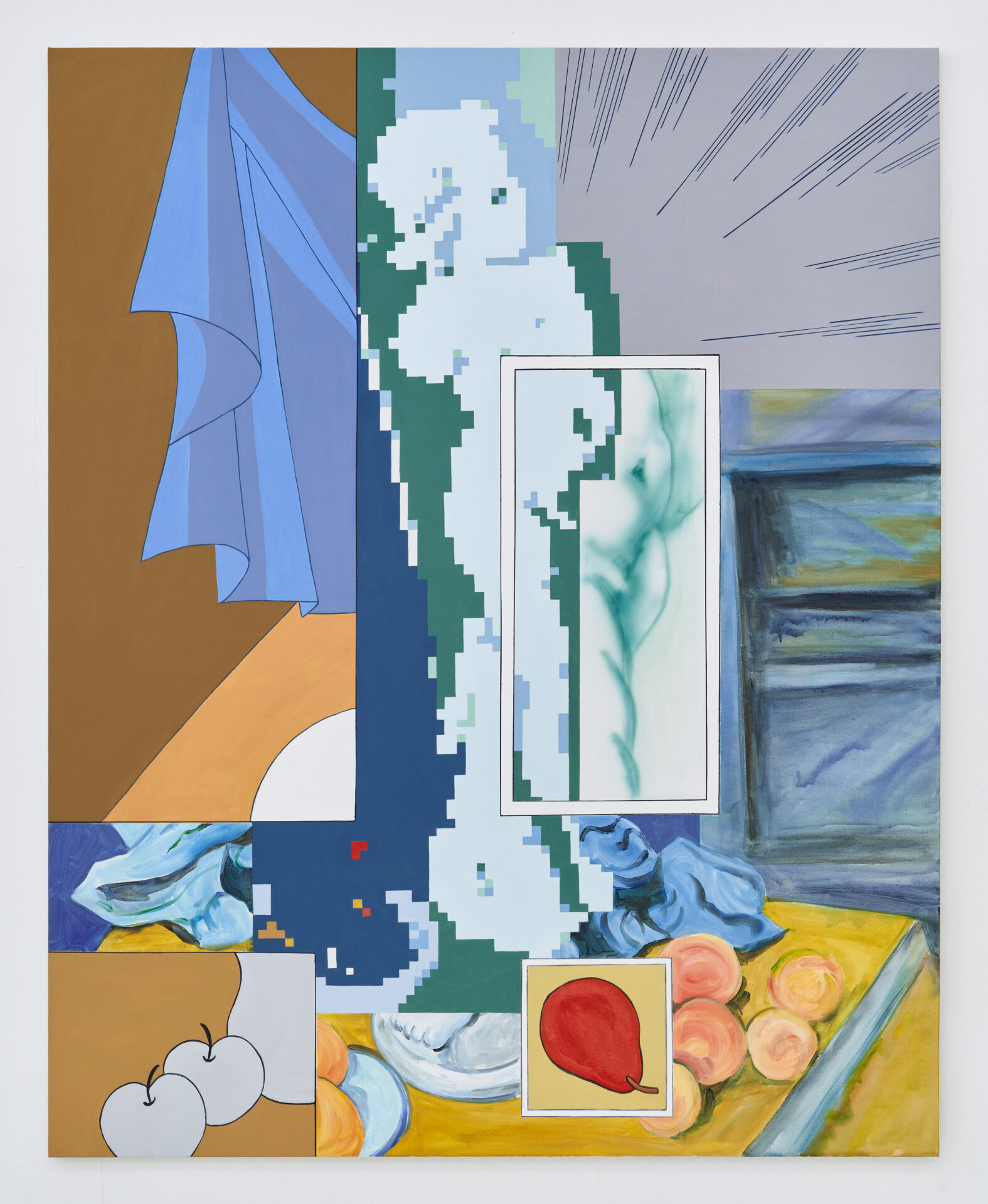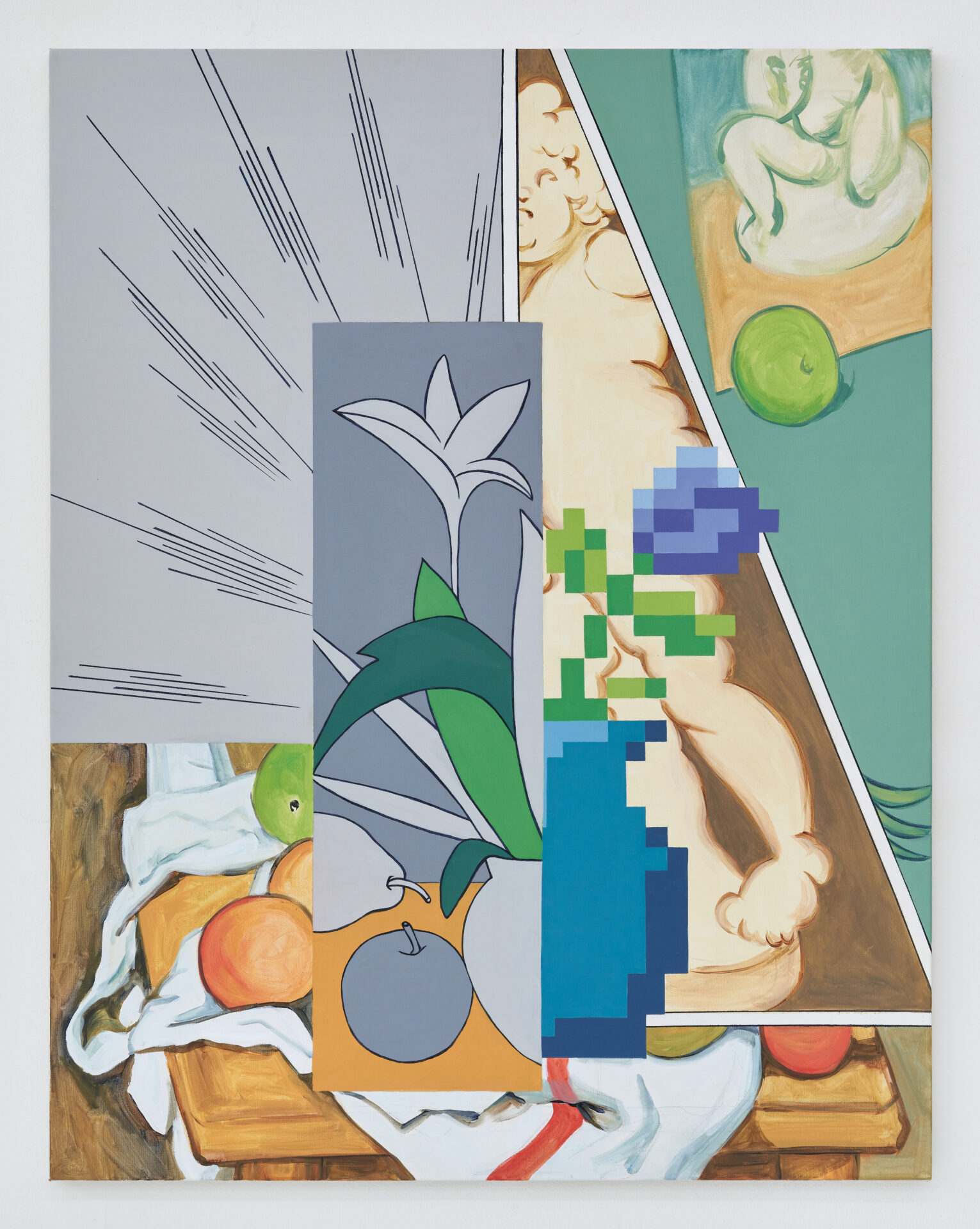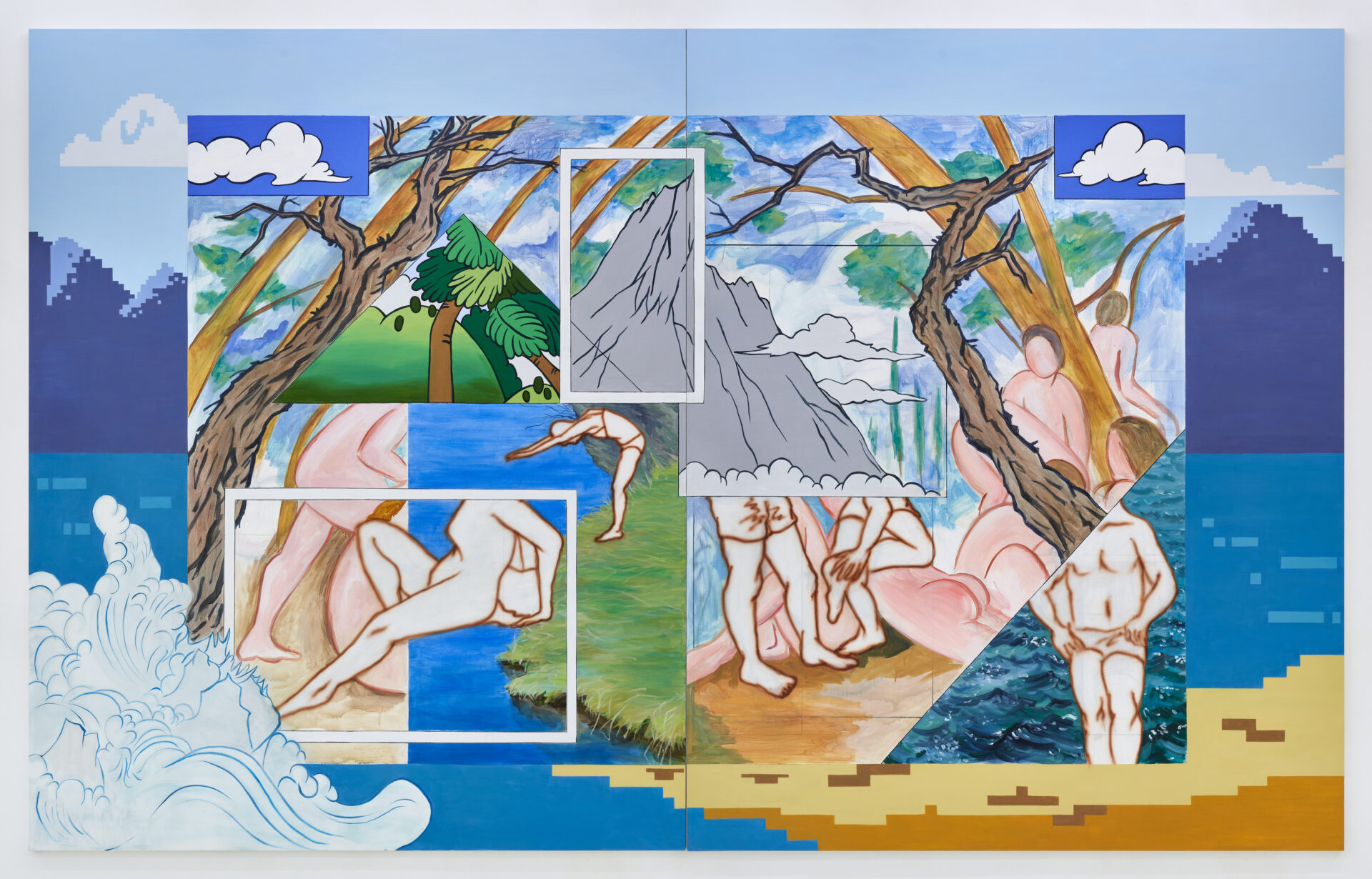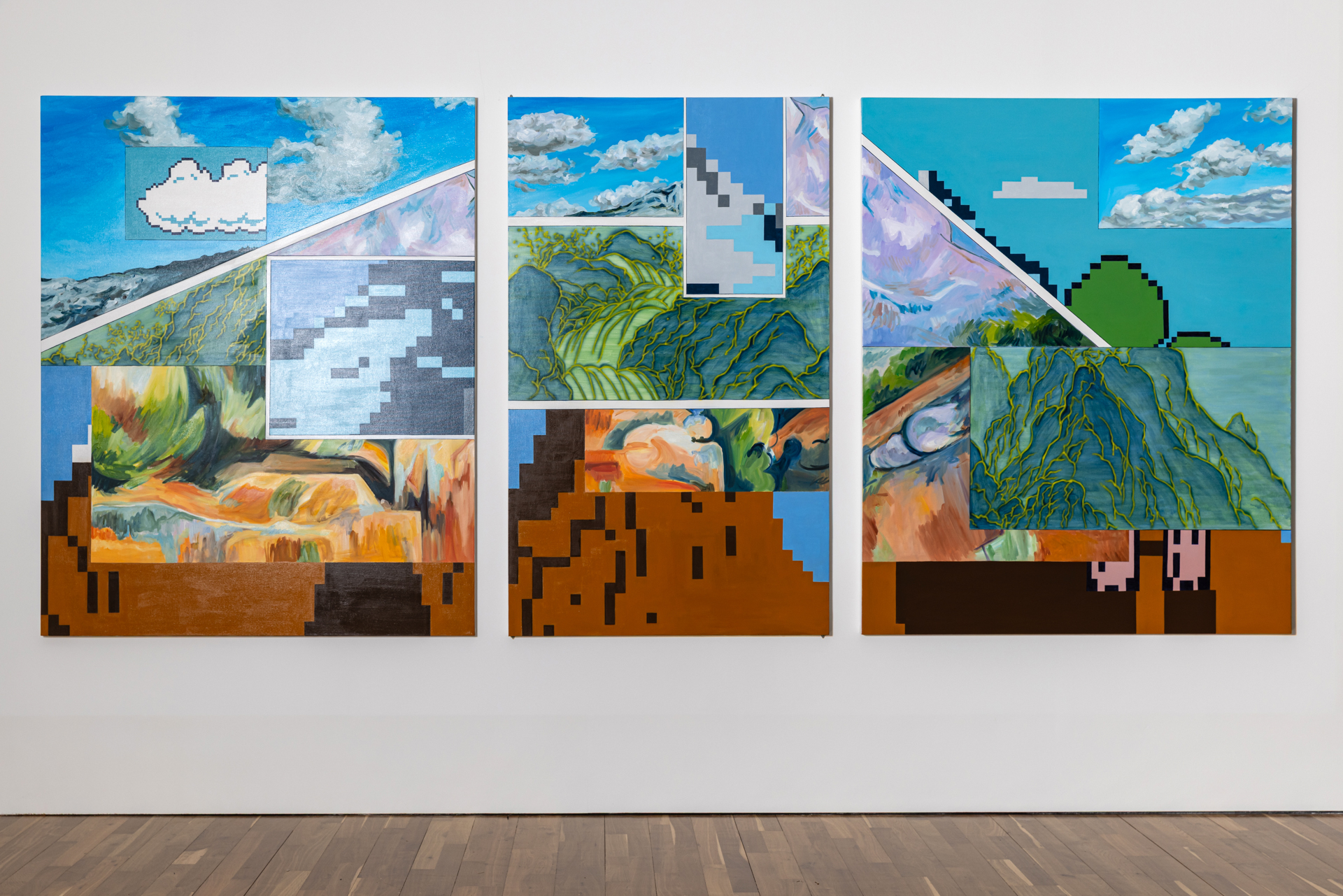전혜림은 회화 속 오래된 상징들부터 동시대 도상들까지 이상화된 이미지를 차용하여, 회화의 기본 조건을 변용하는 방식으로 재배치한다. 회화의 기본 조건 중에서 작가가 주목하는 것은 평면성과 정면성이다. 평면성은 회화를 지지하는 물리적 조건, 즉 2차원의 화면을 의미하며, 정면성은 조각이나 설치와 같이 360도가 아닌 오직 정면으로만 감상할 수 있는 회화의 특징을 가리킨다. 전혜림은 이러한 회화의 전제들을 비틀며, 회화로 고안할 수 있는 새로운 형식과 시각을 탐구한다. 작가는 평면의 회화를 입체 구조나 공간으로 확장하여 기존의 평면성과 정면성에서 벗어난 회화를 제시하는데, 이는 회화로 하여금 독특한 시간성을 갖게 한다. 작가는 오늘날 이미지로 강화되는 시간성, 단숨에 포착되어 정면의 평면만이 유통되는 일회적 시간에 저항하며, 회화를 통한 전복을 모색한다. 작가의 작품에 소환된 이미지는 그가 실험한 분절된 형태를 통해 한눈에 인지되거나 파악되지 않는데, 이러한 물리적 시간의 지연은 이미지의 관념을 해체하며 우리의 시각과 태도에 대한 변화를 유도한다.
Hyerim Jun appropriates idealized images—from traditional symbols to contemporary icons—and rearranges them in ways that transform the fundamental conditions of painting. Her focus lies particularly on two of these conditions: flatness and frontality. Flatness refers to the physical condition of painting—its two-dimensional surface—while frontality denotes the fact that, unlike sculpture or installation, painting is meant to be viewed only from the front. She expands painting beyond the flat surface into spatial or three-dimensional structures, breaking away from the conventions of flatness and frontality—and in doing so, imbues painting with a unique sense of temporality. The artist resists the temporality reinforced by today’s image culture—an instant, one-off time in which flat, front-facing images are captured and circulated in a single glance—and seeks subversion through painting. The images summoned into her work, fragmented through her formal experiments, resist immediate recognition. This deliberate delay in physical time disrupts the conventions of image perception and invites shifts in how we see and engage with them.



